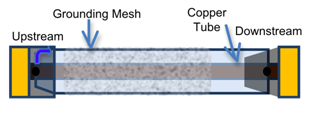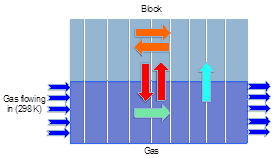Sponsor: N/A
Collaborators: Eric Cardiff (NASA GSFC)
This project focuses on the design and fabrication of a green monopropellant thruster using nitrous oxide as a propellant. Current monopropellants such as hydrazine (N2H4) and hydrogen peroxide (H2O2) are very difficult to handle due to their toxic, flammable properties. Nitrous oxide however is considered a green, non-toxic propellant that can easily be stored as a liquid. Therefore, from a theoretical standpoint, nitrous oxide should be able to offer similar specific impulses but without these safety risks.
 The thruster will be based on the self-sustained dissociation (>1000 ˚C) of nitrous oxide through use of a dielectric barrier discharge (DBD). The overall setup utilized concentric cylinder electrodes to model a DBD. The design was composed of a copper tube placed inside a quartz tube, which acted as a dielectric. With temperatures being recorded upstream and downstream, preliminary findings showed an increase in temperature of nitrous oxide downstream of the plasma section when compared to the non-exothermic control gas (CO2).
The thruster will be based on the self-sustained dissociation (>1000 ˚C) of nitrous oxide through use of a dielectric barrier discharge (DBD). The overall setup utilized concentric cylinder electrodes to model a DBD. The design was composed of a copper tube placed inside a quartz tube, which acted as a dielectric. With temperatures being recorded upstream and downstream, preliminary findings showed an increase in temperature of nitrous oxide downstream of the plasma section when compared to the non-exothermic control gas (CO2).
Current progress is broken up on two fronts:
Vacuum Bell Jar System – In order to isolate the power generated from the DBD and “control” the heat flow, a vacuum bell jar system is being integrated into the design. This will help minimize the heat lost to the environment.
Thermal Analysis – A computational fluid dynamics (CFD) analysis will help determine if dissociation is sufficient to reach self-sustainment or if an external material is required to store energy.
Once this is attained, the scope of the project will expand to the implementation of a monopropellant thruster using nitrous oxide as its propellant.

